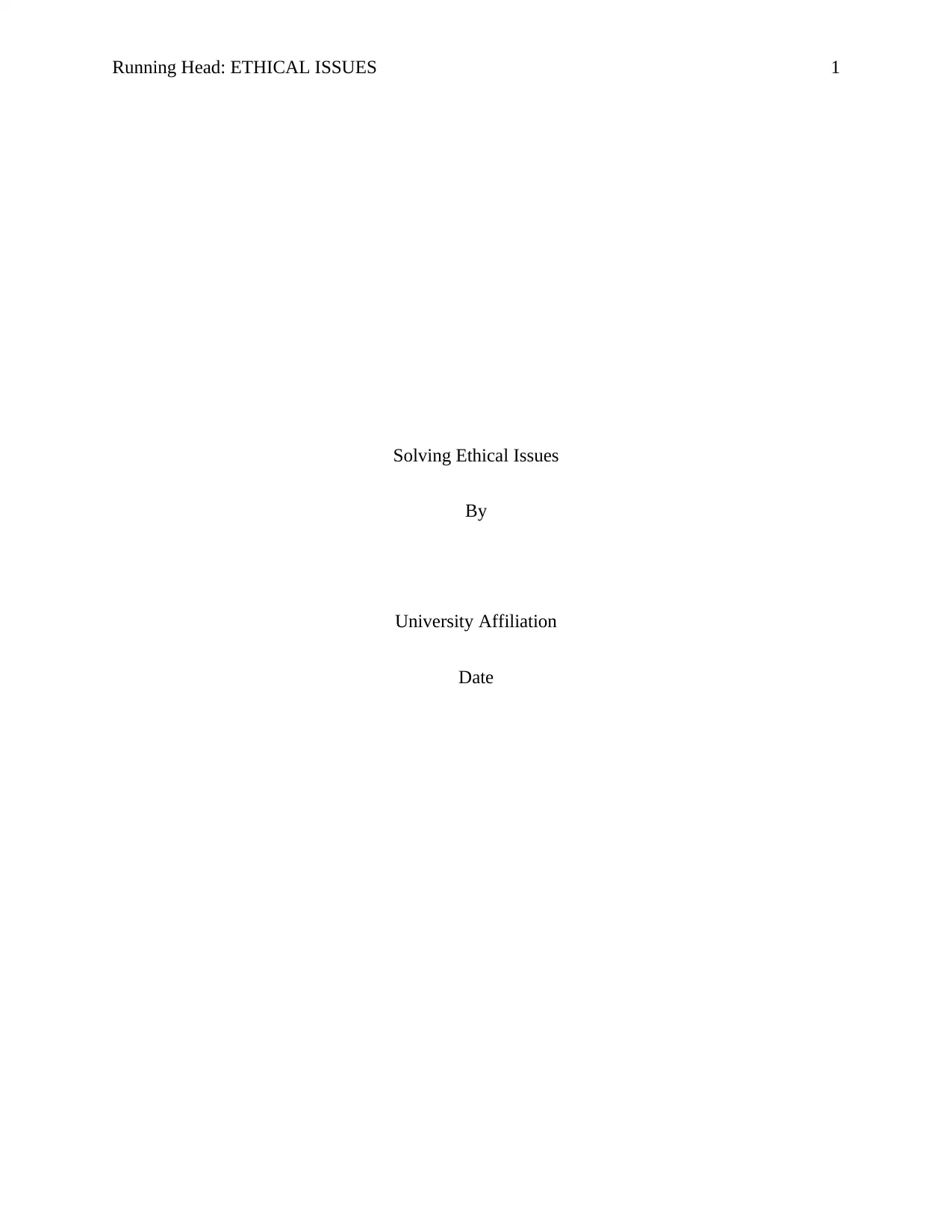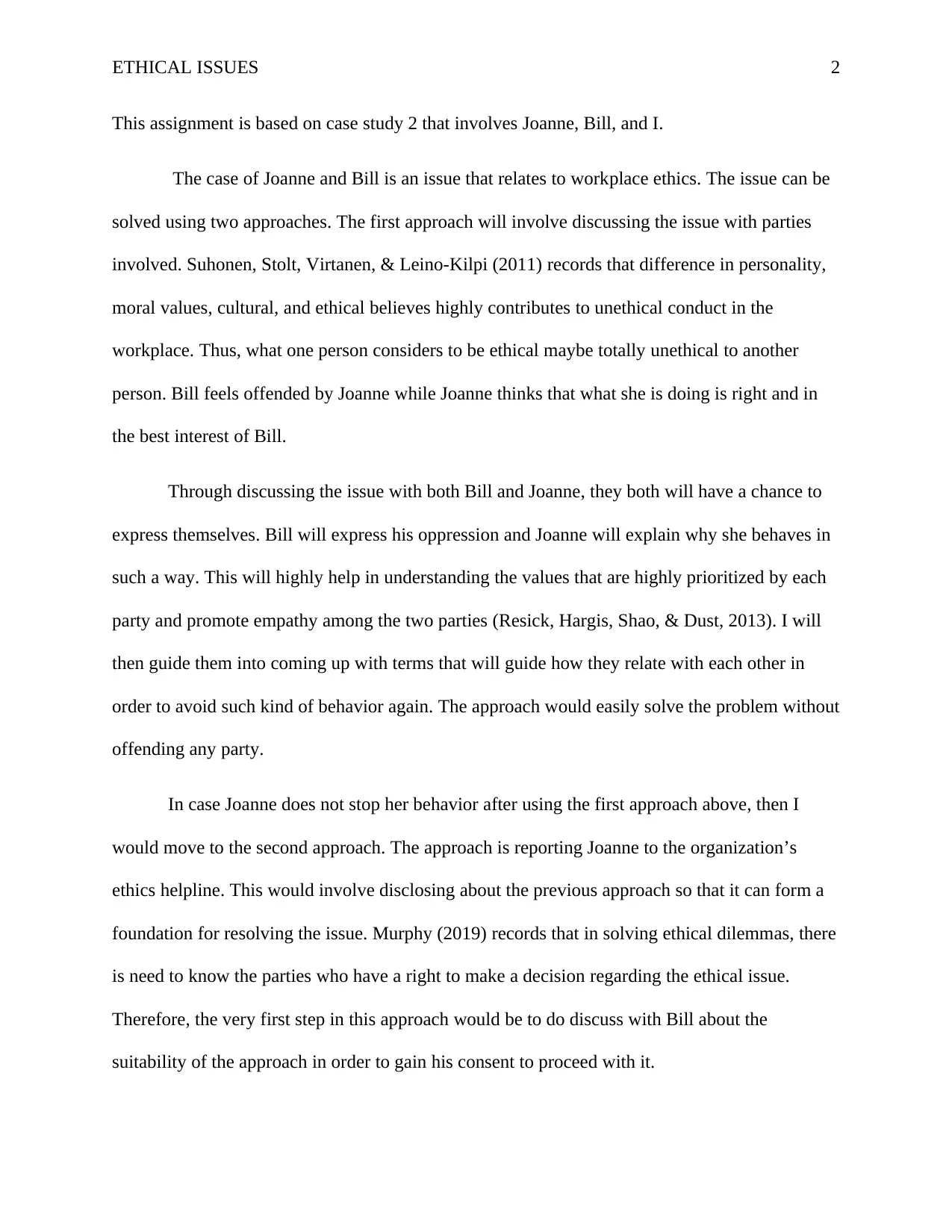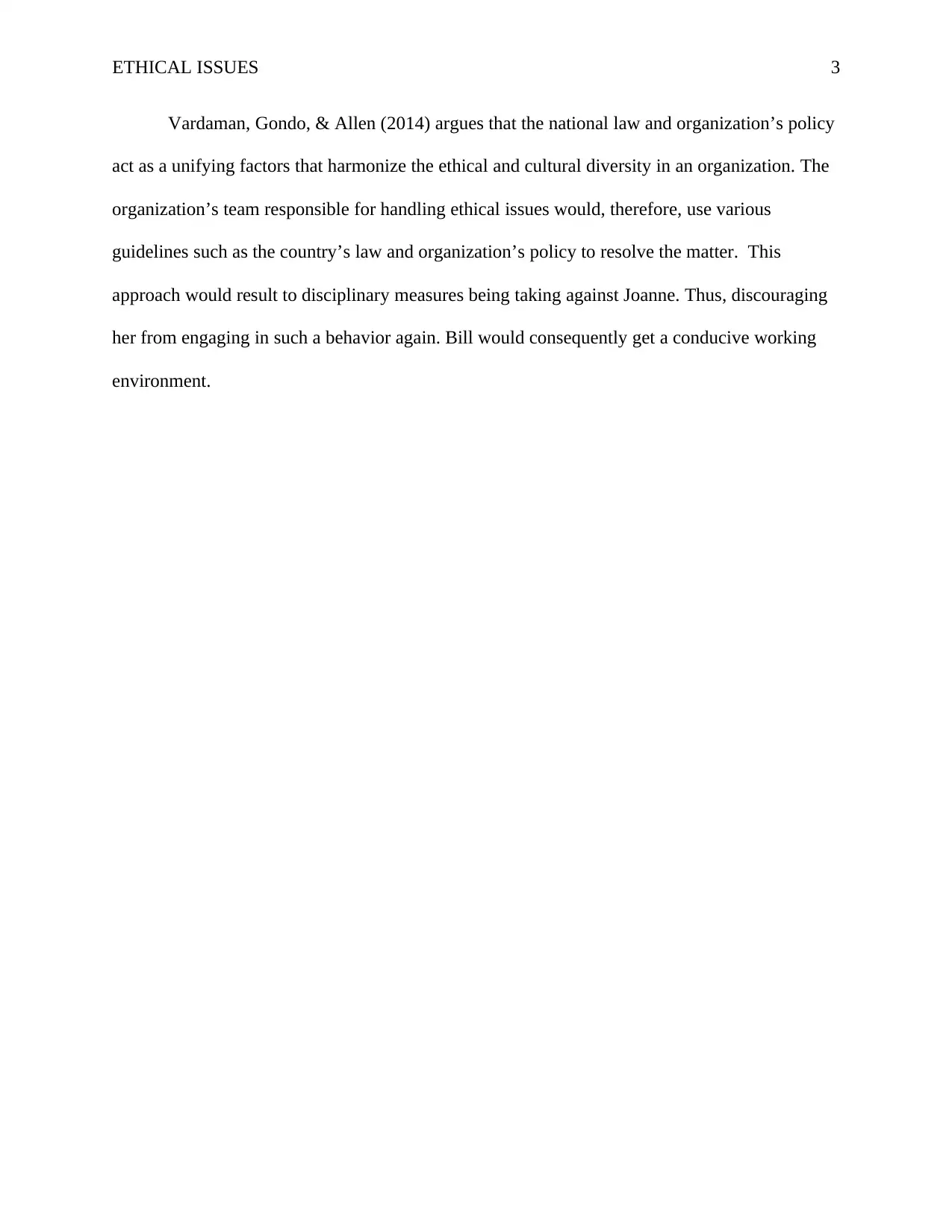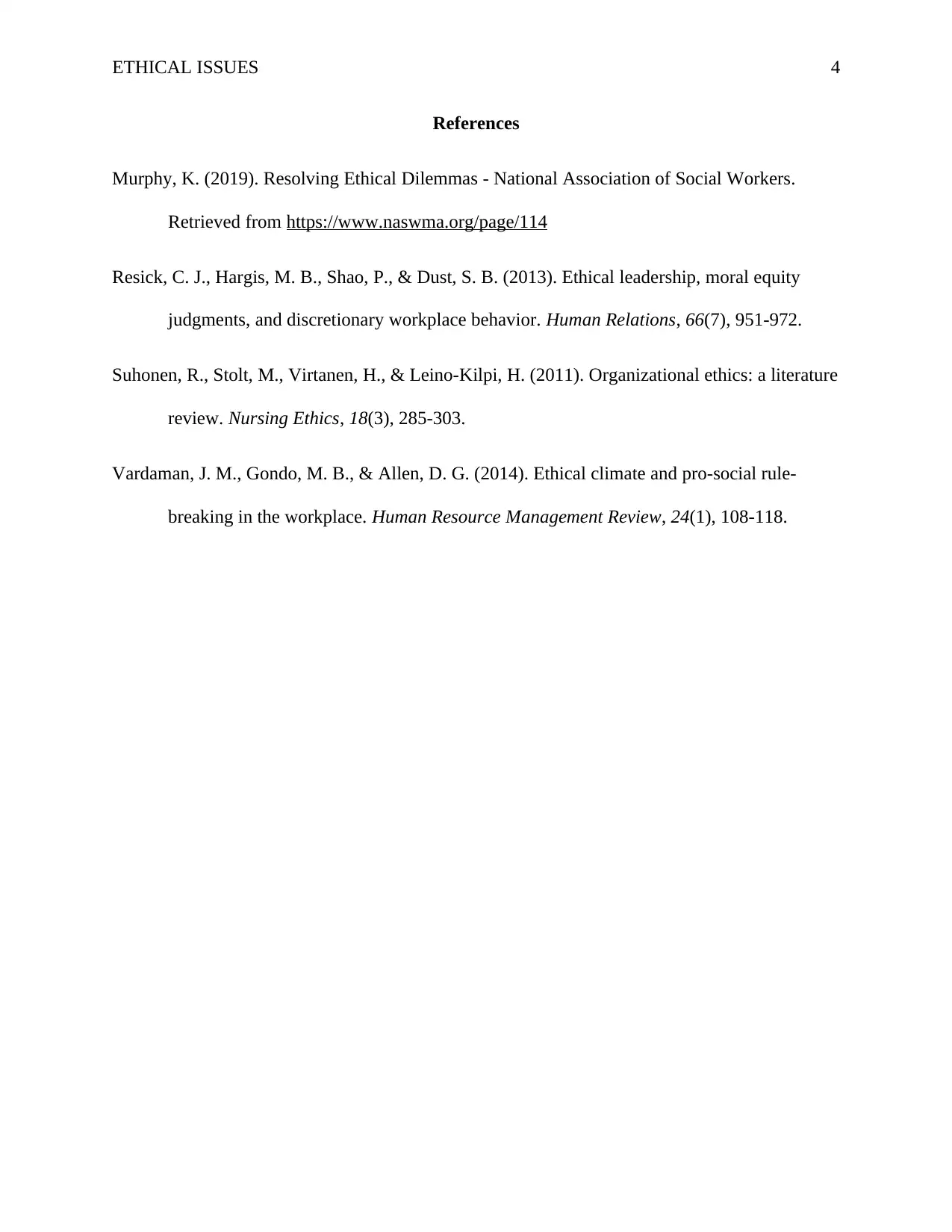Solving Workplace Ethical Issues: A Case Study Analysis
VerifiedAdded on 2023/04/22
|4
|630
|413
Case Study
AI Summary
This assignment presents a case study centered around ethical issues in the workplace, specifically focusing on a conflict between two employees, Joanne and Bill. The analysis explores two primary approaches to resolve the ethical dilemma. The first approach emphasizes direct communication and discussion between the involved parties, promoting empathy and understanding of differing perspectives, moral values, and ethical beliefs to foster a collaborative resolution. The second approach involves reporting the unethical behavior to the organization's ethics helpline, which may lead to disciplinary measures, and ensuring a conducive working environment. The document references scholarly articles to support the proposed solutions, highlighting the importance of organizational policies and national laws in harmonizing ethical and cultural diversity within the workplace. The overall goal is to offer practical strategies for addressing and resolving ethical conflicts, promoting ethical leadership, and creating a positive work environment.
1 out of 4





![[object Object]](/_next/static/media/star-bottom.7253800d.svg)